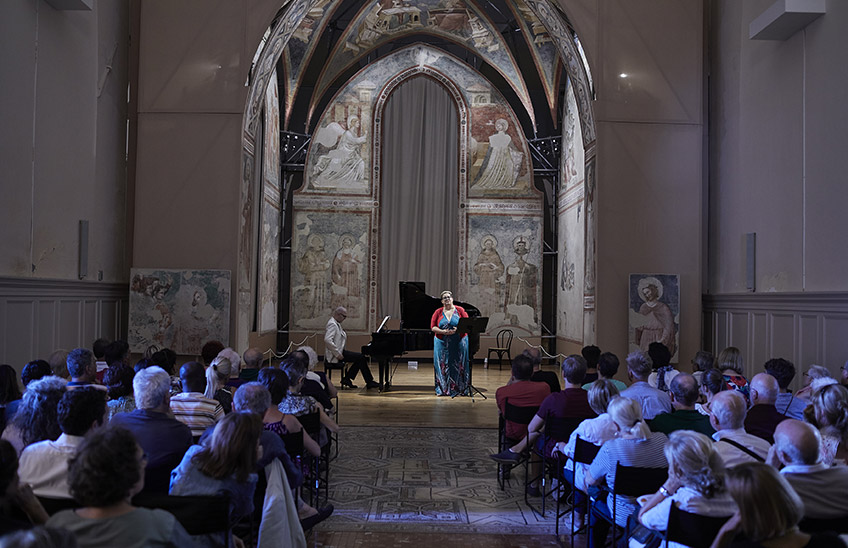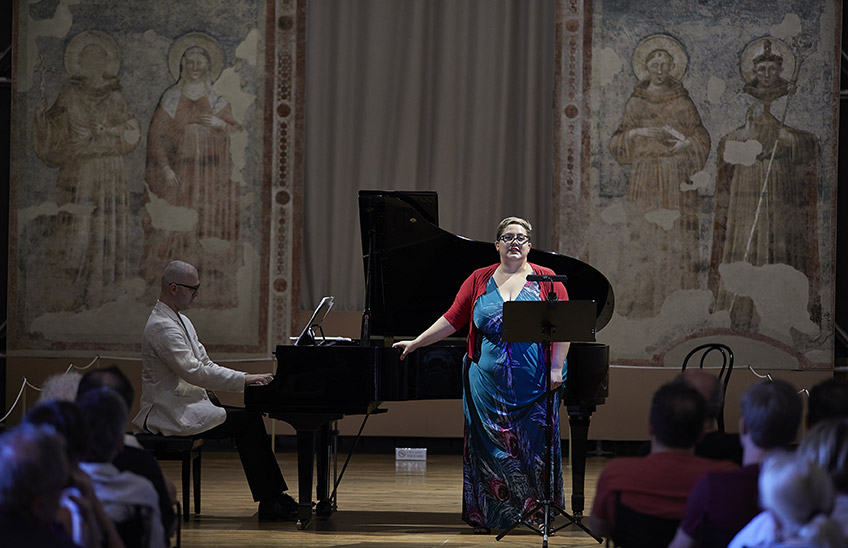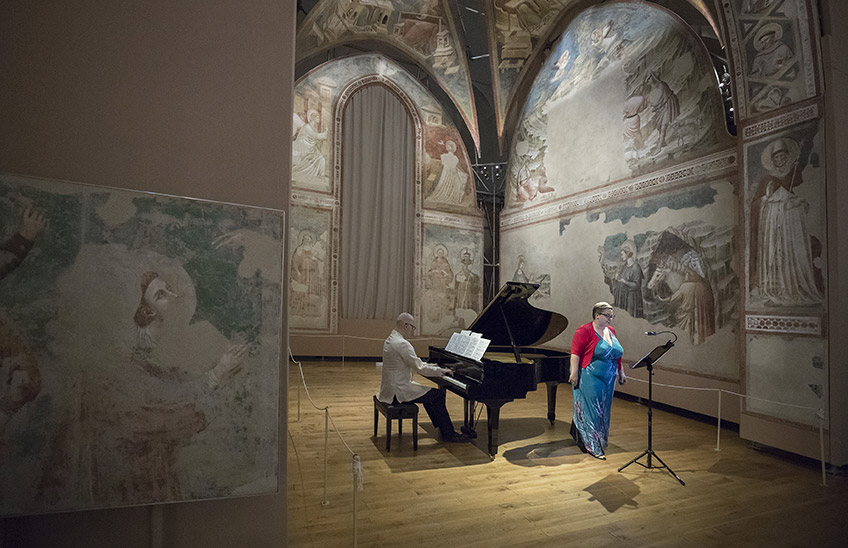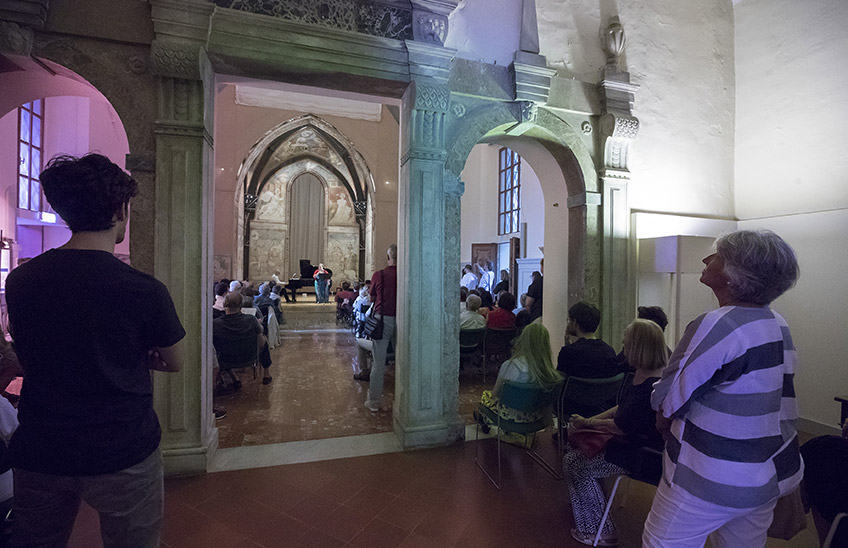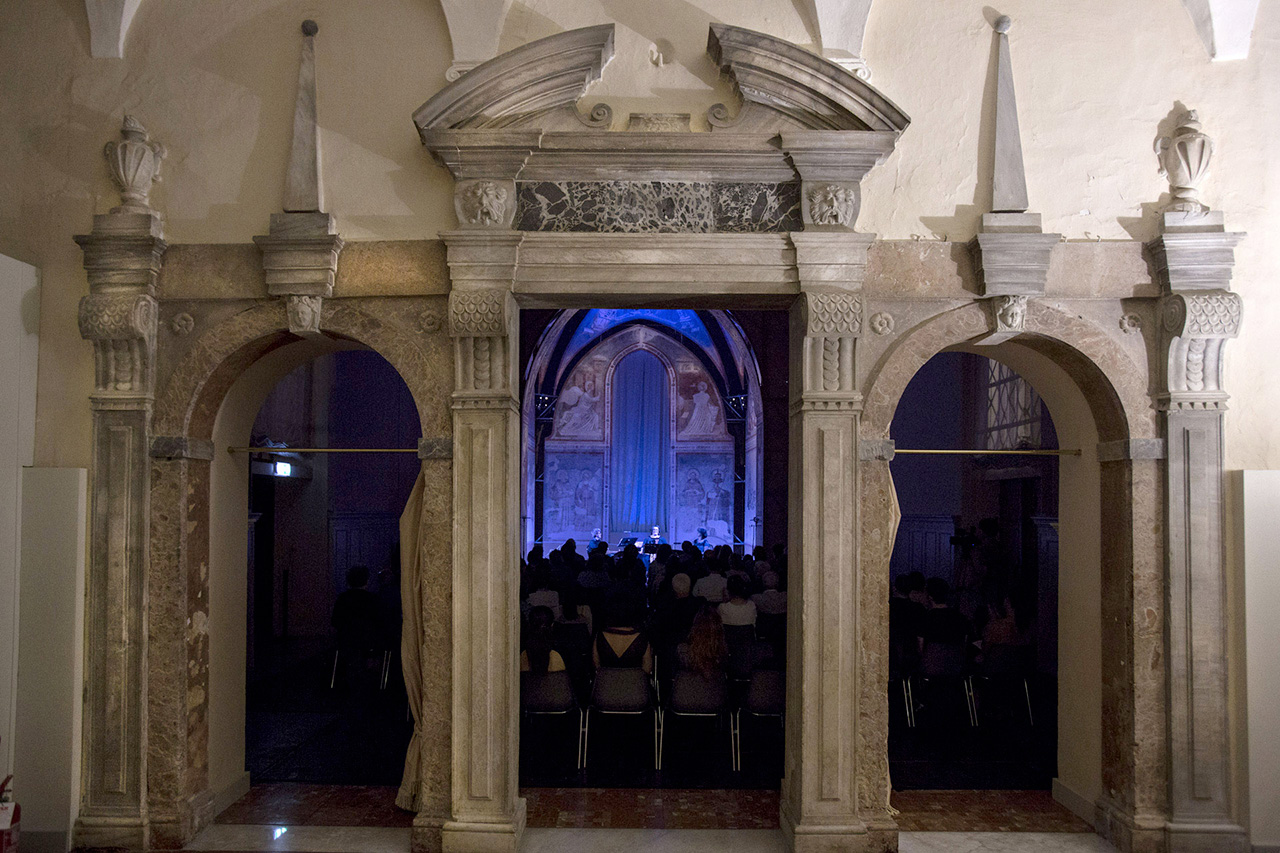© Zani-Casadio
Vespers at San Vitale
Salotto Byron
RaRe Duo
Valentina Vanini mezzo-soprano
Marco Santià piano
Programma
George Gordon Byron (1788-1824)
Mia carissima Teresa
Hugo Wolf (1860-1903)
Sonne der Schlummerlosen
Johannes Brahms (1833-1897)
An eine Aeolsharfe
Erik Satie (1866-1925)
Gymnopédie no. 1
George Gordon Byron
She walks in beauty
Johannes Brahms
Sapphische Ode
Hugo Wolf
Anakreons Grab
Erik Satie
Gymnopédie no. 2
George Gordon Byron
Le isole di Grecia
Robert Schumann (1810-1856)
Lieder Op. 95
Die Tochter Jephtas
An den Mond
Dem Helden
Erik Satie
Gymnopédie n. 3
Maurice Ravel (1875-1937)
Cinq mélodies populaires grécques
Chanson de la mariée
Là-bas, vers l’église
Quel galant m’est comparable
Chanson des cueilleuses de lentisques
Tout gai!
A genuine tribute to the British poet in the city of Ravenna, where he lived from 1819 to 1821. A journey marked by readings from his texts, accompanied by Satie’s Gnossiennes, which are capable of paving the way for two core themes of his adventurous life. First the liaison with Teresa Guiccioli from Ravenna, with an intimate and passionate letter, and the bond with Greece, where “a unique immense kingdom of wonders stretches around, and all the stories of the Muses seem to be true”, recalled by The Isles of Greece. Again a reading, “She Walks in Beauty”, in which the Poet understands the actual mystery of women: an apparition to be conquered. The woman passes, appears but does not disappear, because he stops her with the words of the poem, making her his and ours forever.
In combination with French music, Greece makes its appearance in the Gymnopédies by Satie and in the Cinq mélodies populaires grecques by Ravel, and also in the German Lieder by Brahms and Wolf. Wolf’s other Lied translated by Gildemeister is Sonne der Schlummerlosen, on the Byronian Sun of the sleepless that, revisited by Körner, returns in An den Mond in op. 95 by Schumann, framed by the two heroic songs, always on texts by Byron.
